Can’t Nobody Tell Me Nothin: Respectability and The Produced Voice in Lil Nas X’s “Old Town Road”
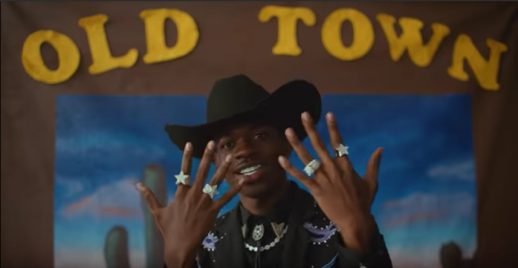
It’s been ten weeks now that we’ve all been kicking back in our Wranglers. allowing Lil Nas X’s infectious twang in “Old Town Road” to shower us in yeehaw goodness from its perch atop the Billboard Hot 100. Entrenched as it is on the pop chart, though, “Old Town Road”’s relationship to Billboard got off to a shaky start, first landing on the Hot Country Songs list only to be removed when the publication determined the hit “does not embrace enough elements of today’s country music to chart in its current version.” There’s a lot to unpack in a statement like that, and folks have been unpacking it quite consistently, especially in relation to notions of genre and race (in addition to Matthew Morrison’s recommended reads, I’d add Karl Hagstrom-Miller’s Segregating Sound, which traces the roots of segregated music markets). Using the context of that ongoing discussion about genre and race, I’m listening here to a specific moment in “Old Town Road”— the line “can’t nobody tell me nothin”—and the way it changes from the original version to the Billy Ray Cyrus remix. Lil Nas X uses the sound of his voice in this moment to savvily leverage his collaboration with a country music icon, and by doing so subtly drawing out the respectability politics underlying Billboard’s racialized genre categorization of his song.
After each of Lil Nas X’s two verses in the original “Old Town Road,” we hear the refrain “can’t nobody tell me nothin.” The song’s texture is fairly sparse throughout, but the refrains feature some added elements. The 808-style kick drum and rattling hihats continue to dominate the soundscape, but they yield just enough room for the banjo sample to come through more clearly than in the verse, and it plucks out a double-time rhythm in the refrain. The vocals change, too, as Lil Nas X performs a call-and-response with himself. The call, “can’t nobody tell me nothin,” is center channel, just as his voice has been throughout the verse, but the response, “can’t tell me nothin,” moves into the left and right speaker, a chorus of Lil Nas X answering the call. Listen closely to these vocals, and you’ll also hear some pitch correction. Colloquially known as “autotune,” this is an effect purposely pushed to extreme limits to produce garbled or robotic vocals and is a technique most often associated with contemporary hip hop and R&B. Here, it’s applied to this melodic refrain, most noticeably on “nothin” in the call and “can’t” in the response,
After Billboard removed the song from the Hot Country chart in late March, country star Billy Ray Cyrus tweeted his support for “Old Town Road,” and by early April, Lil Nas X had pulled him onto the remix that would come to dominate the Hot 100. The Cyrus remix is straightforward: Cyrus takes the opening chorus, then Lil Nas X’s original version plays through from the first verse to the last chorus, at which point Cyrus tacks on one more verse and then sings the hook in tandem with Lil Nas X to close the song. Well, it’s straightforward except that, while Lil Nas X’s material sounds otherwise unaltered from the original version, the pitch correction is smoothed out so that the garble from the previous version is gone.
In order to figure out what happened to the pitch correction from the first to second “Old Town Road,” I’m bringing in a conceptual framework I’ve been tinkering with the last couple of years: the produced voice. Within this framework, all recorded voices are produced in two specific ways: 1) everyone performs their bodies in relation to gender, race, ability, sex, and class norms, and 2) everyone who sings on record has their voice altered or affected with various levels of technology. To think about a produced voice is to think about how voices are shaped by recording technologies and social technologies at the same time. Listening to the multiple versions of “Old Town Road” draws my attention specifically to the always collaborative nature of produced voices.
In performativity terms—and here Judith Butler’s idea in “Performative Acts and Gender Constitution: An Essay in Phenomenology and Feminist Theory” that “one is not simply a body, but, in some very key sense, one does one’s body” (521) is crucial—a collaboratively produced voice is a little nebulous, as it’s not always clear who I’m collaborating with to produce my voice. Sometimes I can (shamefully, I assure you) recognize myself changing the way my voice sounds to fit into some sort of, say, gendered norm that my surroundings expect. As a white man operating in a white supremacist, cisheteropatriarchal society, the deeper my voice sounds, the more authority adheres to me. (Well, only to a point, but that’s another essay). Whether I consciously or subconsciously make my voice deeper, I am definitely involved in a collaboration, as the frequency of my voice is initiated in my body but dictated outside my body. Who I’m collaborating with is harder to establish – maybe it’s the people in the room, or maybe my produced voice and your listening ears (read Jennifer Stoever’s The Sonic Color Line for more on the listening ear) are all working in collaboration with notions of white masculine authority that have long-since been baked into society by teams of chefs whose names we didn’t record.
In studio production terms, a voice’s collaborators are often hard to name, too, but for different reasons. For most major label releases, we could ask who applied the effects that shaped the solo artist’s voice, and while there’s a specific answer to that question, I’m willing to bet that very few people know for sure. Even where we can track down the engineers, producers, and mix and master artists who worked on any given song, the division of labor is such that probably multiple people (some who aren’t credited anywhere as having worked on the song) adjusted the settings of those vocal effects at some point in the process, masking the details of the collaboration. In the end, we attribute the voice to a singular recording artist because that’s the person who initiated the sound and because the voice circulates in an individualistic, capitalist economy that requires a focal point for our consumption. But my point here is that collaboratively produced voices are messy, with so many actors—social or technological—playing a role in the final outcome that we lose track of all the moving pieces.
Not everyone is comfortable with this mess. For instance, a few years ago long-time David Bowie producer Tony Visconti, while lamenting the role of technology in contemporary studio recordings, mentioned Adele as a singer whose voice may not be as great as it is made to sound on record. Adele responded by requesting that Visconti suck her dick. And though the two seemed at odds with each other, they were being equally disingenuous: Visconti knows that every voice he’s produced has been manipulated in some way, and Adele, too, knows that her voice is run through a variety of effects and algorithms that make her sound as epically Adele as possible. Visconti and Adele align in their desire to sidestep the fundamental collaboration at play in recorded voices, keeping invisible the social and political norms that act on the voice, keeping inaudible the many technologies that shape the voice.
Propping up this Adele-Visconti exchange is a broader relationship between those who benefit from social gender/race scripts and those who benefit from masking technological collaboration. That is, Adele and Visconti both benefit, to varying degrees, from their white femininity and white masculinity, respectively; they fit the molds of race and gender respectability. Similarly, they both benefit from discourses surrounding respectable music and voice performance; they are imbued with singular talent by those discourses. And on the flipside of that relationship, where we find artists who have cultivated a failure to comport with the standards of a respectable singing voice, we’ll also find artists whose bodies don’t benefit from social gender/race scripts: especially Black and Brown artists—non-binary, women, and men. Here I’m using “failure” in the same sense Jack Halberstam does in The Queer Art of Failure, where failing is purposeful, subversive. To fail queerly isn’t to fall short of a standard you’re trying to meet; it’s to fall short of a standard you think is bullshit to begin with. This kind of failure would be a performance of non-conformity that draws attention to the ways that systemic flaws – whether in social codes or technological music collaborations – privilege ways of being and sounding that conform with white feminine and white masculine aesthetic standards. To fail to meet those standards is to call the standards into question.
So, because respectably collaborating a voice into existence involves masking the collaboration, failing to collaborate a voice into existence would involve exposing the process. This would open up the opportunity for us to hear a singer like Ma$e, who always sings and never sings well, as highlighting a part of the collaborative vocal process (namely pitch correction, either through training or processing the voice) by leaving it out. To listen to Ma$e in terms of failed collaboration is to notice which collaborators didn’t do their work. In Princess Nokia’s doubled and tripled and quadrupled voice, spread carefully across the stereo field, we hear a fully exposed collaboration that fails to even attempt to meet any standards of respectable singing voices. In the case of the countless trap artists whose voices come out garbled through the purposeful misapplication of pitch correction algorithms, we can hear the failure of collaboration in the clumsy or over-eager use of the technology. This performed pitch correction failure is the sound I started with, Lil Nas X on the original lines “can’t nobody tell me nothin.” It’s one of the few times we can hear a trap aesthetic in “Old Town Road,” outside of its instrumental.
In each of these instances, the failure to collaborate results in the failure to achieve a respectably produced voice: a voice that can sing on pitch, a voice that can sing on pitch live, a voice that is trained, a voice that is controlled, a voice that requires no intervention to be perceived as “good” or “beautiful” or “capable.” And when respectable vocal collaboration further empowers white femininity or white masculinity, failure to collaborate right can mean failing in a system that was never going to let you pass in the first place. Or failing in a system that applies nebulous genre standards that happen to keep a song fronted by a Black artist off the country charts but allow a remix of the same song to place a white country artist on the hip hop charts.
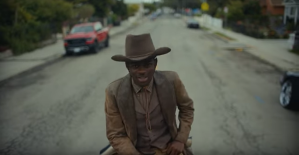 The production shift on “can’t nobody tell me nothin” is subtle, but it brings the relationship between social race/gender scripts and technological musical collaboration into focus a bit. It isn’t hard to read “does not embrace enough elements of today’s country music” as “sounds too Black,” and enough people called bullshit on Billboard that the publication has had to explicitly deny that their decision had anything to do with race. Lil Nas X’s remix with Billy Ray Cyrus puts Billboard in a really tricky rhetorical position, though. Cyrus’s vocals—more pinched and nasally than Lil Nas X’s, with more vibrato on the hook (especially on “road” and “ride”), and framed without the hip hop-style drums for the first half of his verse—draw attention to the country elements already at play in the song and remove a good deal of doubt about whether “Old Town Road” broadly comports with the genre. But for Billboard to place the song back on the Country chart only after white Billy Ray Cyrus joined the show? Doing so would only intensify the belief that Billboard’s original decision was racially motivated. In order for Billboard to maintain its own colorblind respectability in this matter, in order to keep their name from being at the center of a controversy about race and genre, in order to avoid being the publication believed to still be divvying up genres primarily based on race in 2019, Billboard’s best move is to not move. Even when everyone else in the world knows “Old Town Road” is, among other things, a country song, Billboard’s country charts will chug along as if in a parallel universe where the song never existed.
The production shift on “can’t nobody tell me nothin” is subtle, but it brings the relationship between social race/gender scripts and technological musical collaboration into focus a bit. It isn’t hard to read “does not embrace enough elements of today’s country music” as “sounds too Black,” and enough people called bullshit on Billboard that the publication has had to explicitly deny that their decision had anything to do with race. Lil Nas X’s remix with Billy Ray Cyrus puts Billboard in a really tricky rhetorical position, though. Cyrus’s vocals—more pinched and nasally than Lil Nas X’s, with more vibrato on the hook (especially on “road” and “ride”), and framed without the hip hop-style drums for the first half of his verse—draw attention to the country elements already at play in the song and remove a good deal of doubt about whether “Old Town Road” broadly comports with the genre. But for Billboard to place the song back on the Country chart only after white Billy Ray Cyrus joined the show? Doing so would only intensify the belief that Billboard’s original decision was racially motivated. In order for Billboard to maintain its own colorblind respectability in this matter, in order to keep their name from being at the center of a controversy about race and genre, in order to avoid being the publication believed to still be divvying up genres primarily based on race in 2019, Billboard’s best move is to not move. Even when everyone else in the world knows “Old Town Road” is, among other things, a country song, Billboard’s country charts will chug along as if in a parallel universe where the song never existed.
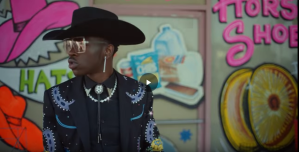 As Lil Nas X shifted Billboard into a rhetorical checkmate with the release of the Billy Ray Cyrus remix, he also shifted his voice into a more respectable rendition of “can’t nobody tell me nothin,” removing the extreme application of pitch correction effects. This seems the opposite of what we might expect. The Billy Ray Cyrus remix is defiant, thumbing its nose at Billboard for not recognizing the countryness of the tune to begin with. Why, in a defiant moment, would Lil Nas X become more respectable in his vocal production? I hear the smoothed-out remix vocals as a palimpsest, a writing-over that, in the traces of its editing, points to the fact that something has been changed, therefore never fully erasing the original’s over-affected refrain. These more respectable vocals seem to comport with Billboard’s expectations for what a country song should be, showing up in more acceptable garb to request admittance to the country chart, even as the new vocals smuggle in the memory of the original’s more roboticized lines.
As Lil Nas X shifted Billboard into a rhetorical checkmate with the release of the Billy Ray Cyrus remix, he also shifted his voice into a more respectable rendition of “can’t nobody tell me nothin,” removing the extreme application of pitch correction effects. This seems the opposite of what we might expect. The Billy Ray Cyrus remix is defiant, thumbing its nose at Billboard for not recognizing the countryness of the tune to begin with. Why, in a defiant moment, would Lil Nas X become more respectable in his vocal production? I hear the smoothed-out remix vocals as a palimpsest, a writing-over that, in the traces of its editing, points to the fact that something has been changed, therefore never fully erasing the original’s over-affected refrain. These more respectable vocals seem to comport with Billboard’s expectations for what a country song should be, showing up in more acceptable garb to request admittance to the country chart, even as the new vocals smuggle in the memory of the original’s more roboticized lines.
While the original vocals failed to achieve respectability by exposing the recording technologies of collaboration, the remix vocals fail to achieve respectability by exposing the social technologies of collaboration, feigning compliance and daring its arbiter to fail it all the same. The change in “Old Town Road”’s vocals from original to remix, then, stacks collaborative exposures on top of one another as Lil Nas X reminds the industry gatekeepers that can’t nobody tell him nothin, indeed.
_
Featured image, and all images in this post: screenshots from “Lil Nas X – Old Town Road (Official Movie) ft. Billy Ray Cyrus” posted by YouTube user Lil Nas X
_
Justin aDams Burton is Assistant Professor of Music at Rider University. His research revolves around critical race and gender theory in hip hop and pop, and his book, Posthuman Rap, is available now. He is also co-editing the forthcoming (2018) Oxford Handbook of Hip Hop Music Studies. You can catch him at justindburton.com and on Twitter @j_adams_burton. His favorite rapper is one or two of the Fat Boys.
_
 REWIND! . . .If you liked this post, you may also dig:
REWIND! . . .If you liked this post, you may also dig:
Vocal Anguish, Disinformation, and the Politics of Eurovision 2016-Maria Sonevytsky
Cardi B: Bringing the Cold and Sexy to Hip Hop-Ashley Luthers
“To Unprotect and Subserve”: King Britt Samples the Sonic Archive of Police Violence-Alex Werth
Remixing Girl Talk: The Poetics and Aesthetics of Mashups
Peter DiCola’s analysis of Girl Talk is astute, on point, and insightful. So instead of quibbling with him about arcane or subjective matters, I’ll try to add a bit of aesthetic and cultural analysis to his legal and procedural observations.
Improvising vs. Composing
First of all, it’s important to point out that Girl Talk is not a typical mashup artist, and in fact many of the DJs I interviewed for my book Mashed Up: Music, Technology, and the Rise of Configurable Culture (University of Massachusetts Press, 2010) don’t really view him as one of their own. This isn’t simply because he exceeds the standard, 2-song “A plus B” technique that serves as a basic template for the form; after all, Osymyso was mashing together hundreds of songs at a time back in the early 2000s, and he’s downright canonical. Rather, it’s because Girl Talk is more improvisatory, and less formalistic, than most other mashers.
my book Mashed Up: Music, Technology, and the Rise of Configurable Culture (University of Massachusetts Press, 2010) don’t really view him as one of their own. This isn’t simply because he exceeds the standard, 2-song “A plus B” technique that serves as a basic template for the form; after all, Osymyso was mashing together hundreds of songs at a time back in the early 2000s, and he’s downright canonical. Rather, it’s because Girl Talk is more improvisatory, and less formalistic, than most other mashers.
Of course, improvisation has been a central element of DJing at least since Kool Herc first started beat juggling between two decks. And some contemporary mashup DJs, like Z-Trip and TradeMark G, are rooted in live, on-stage improvisation. But these are the exceptions, not the rule. If sample-based music describes a spectrum between what we traditionally think of as performance and composition, the vast bulk of mashup artists tend to see themselves on the composition side of the fence. They assemble the mashup in the studio, then play it “as is” in the club, just as they would play any other record. As DJ Earworm told me, “a good mashup artist is a good composer. Because, you know, you’re moving these parts around and giving it new form.” While Girl Talk certainly lives up to this description on albums such as “All Day,” his live, improvisatory performances are something else altogether.
Mashup vs. Cut-up
An interesting point DiCola raises is the prevalence of what he calls the “name-that-tune” critique of the mashup aesthetic, the claim that they “have no intertextuality or deeper meaning.” Not only is this claim unjustified, it completely misses the point. The problem is, these critics think of mashups as simply another example of paper-thin postmodernism. This couldn’t be further from the truth; in fact, you could call mashups post-postmodern.
To illustrate my point, let’s take a look at an earlier art form that looks a lot like mashup at first glance: the cut-up. Cut-ups were a kind of literary collage popular among avant-garde writers like William Burroughs and Brion Gysin in the mid-20th century. As the technique’s name suggests, writers would cut existing, finished texts into pieces, and then tape them back together in random fashion, thus generating surprising and provocative new juxtapositions and grammatical logics. The cut-up was the very essence of postmodernism: it aimed to disrupt the “master narrative” of linear thought and force the reader to confront its limits head-on. In other words, it was a reaction to, and an inoculation against, high modernism.
Mashups use similar techniques to achieve the opposite effect. We no longer live in a modern world, in which all information is forced to hew to a single, objectified model of reality. Postmodernism has not only successfully exposed and disrupted the hidden power dynamics of the master narrative, but produced a cultural environment in which an endless parade of symbols float unmoored in a sea of chaos and contradiction. The role of the mashup is to restore some semblance of order to this maelstrom, by stitching together the disparate symbols with a genealogical thread. Every sample in a mashup means something, and brings its entire cultural history trailing behind it. Thus, while the cut-up is named for its ability to sever signifier from signified, the mashup is named for its power to suture them back together (albeit in different combinations and permutations). This is the point that critics miss: the mashup isn’t an expression of postmodern nihilism, but an argument against it.
Whither Originality?
The final point of DiCola’s I’ll touch upon is the concept of originality, as it applies to a cultural form that consists entirely of “borrowed” work. As he observes, the question of whether a given mashup is original or not is almost moot when it comes to questions of transformativity and “fair use”; the very fact that people argue about it demonstrates that creative forces are at work.
Yet it’s also interesting to look at how the originality arguments play out. I devote an entire chapter of Mashed Up to exploring the various techniques DJs employ to differentiate between innovative and derivative work, as well as the ways in which they’ve moved beyond the distinction altogether. Commonly cited markers of originality in mashups include: how well a DJ selects his source materials; how the samples are arranged, both spatially and temporally; how the samples are transformed using digital processing techniques; and even textual interplay between the lyrics of the songs he’s chosen. In combination, these factors can describe a given DJ’s “signature” style, as distinctive as a saxophonist’s phrasing and tone, or a rapper’s rhyme and flow.
One could spend countless hours dissecting the mashup aesthetic and debating its legalities, and having done so myself, I can attest that it’s time well spent. Ultimately, however, the form’s significance outstrips even these weighty dimensions of analysis. What makes the mashup most interesting to me isn’t the question of what an individual work means, or whether it’s legitimate in the eyes of the copyright office, but rather how it’s produced (and reproduced) in the first place.
Our mode of musical production is always a harbinger of social changes to come, and the mashup has a lot to say about what lies in store for us as a globally connected, digital society. By blurring the lines between artist and audience, original and copy, the mashup fundamentally rejects the atomistic assumptions that undergird our legal, economic and political institutions. The millions of people who participate in the process of re-imagining a song comprise a kind of “collective subjectivity” as cohesive and amorphous as a storm cloud, and like a cloud, their actions only have meaning in aggregate.
This is why analyses that focus on a DJ like Girl Talk as though he’s a radical innovator or lone copyright renegade always tend to leave me cold. As Girl Talk himself would be the first to admit, his work neither begins or ends on his laptop; at best, he’s a highly entertaining conduit for an infinitely larger and more complex process. Or, to use his words (as I did in the epigraph to Mashed Up), “This shit is not about me, it’s about all of us, ’cause we’re the same motherfuckin’ person.”

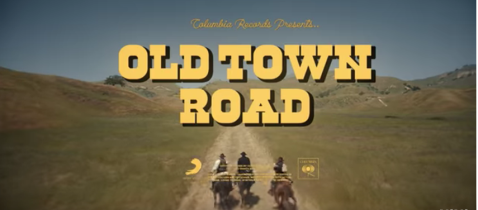

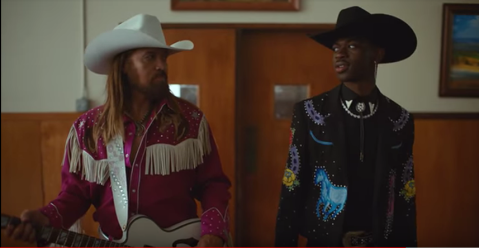





























Recent Comments